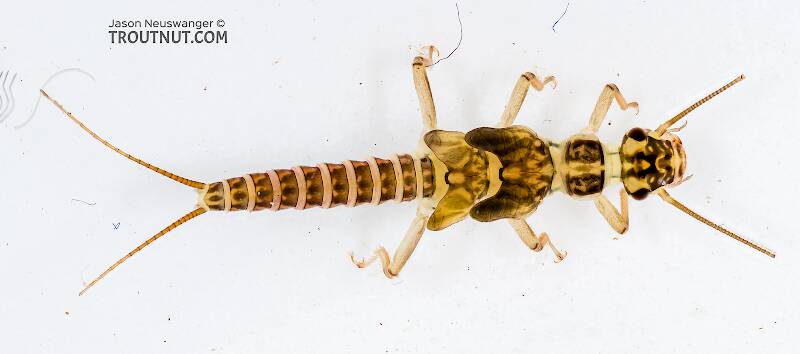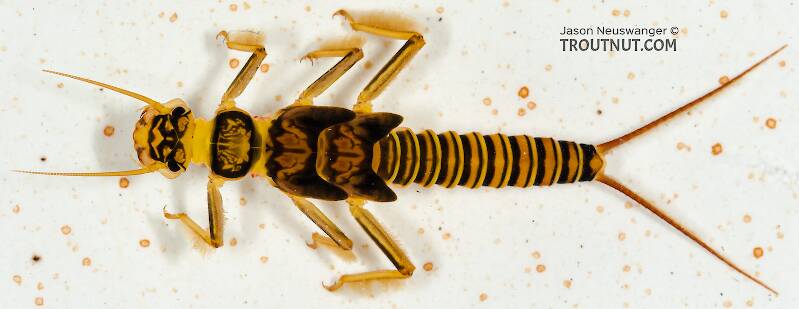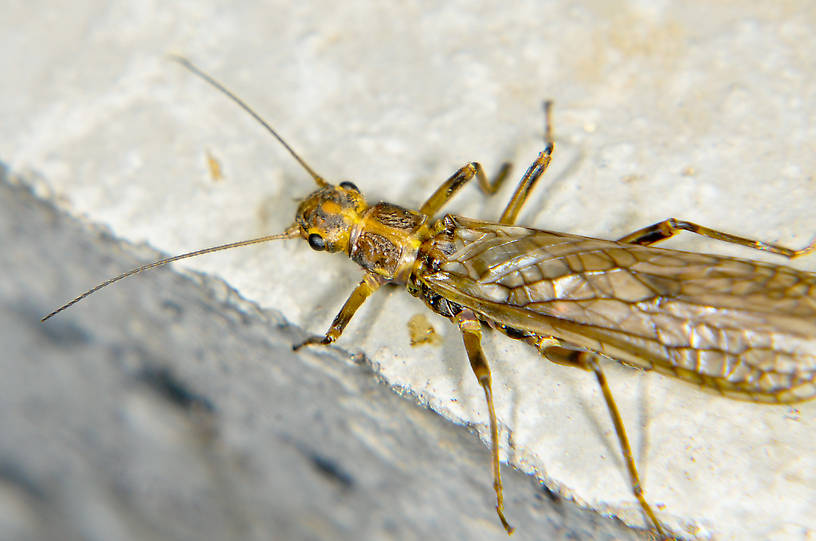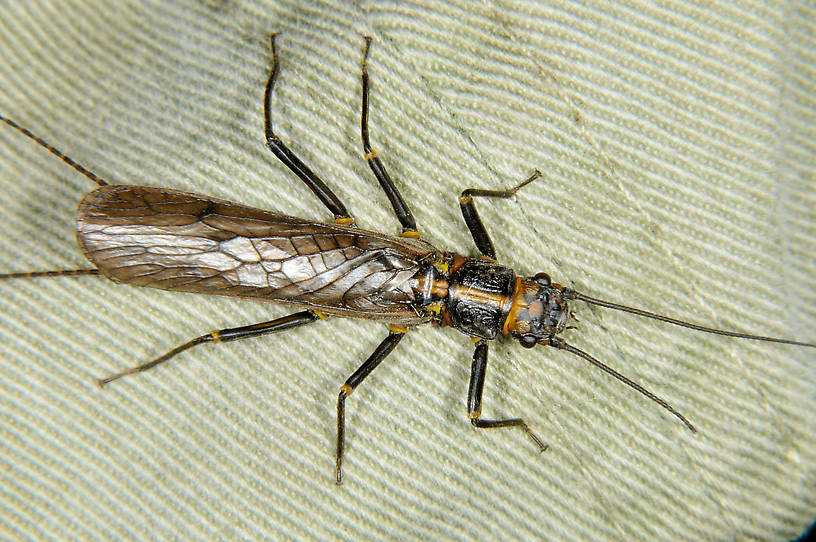
Salmonflies
Pteronarcys californica
The giant Salmonflies of the Western mountains are legendary for their proclivity to elicit consistent dry-fly action and ferocious strikes.
Featured on the forum

Troutnut is a project started in 2003 by salmonid ecologist Jason "Troutnut" Neuswanger to help anglers and
fly tyers unabashedly embrace the entomological side of the sport. Learn more about Troutnut or
support the project for an enhanced experience here.
Springflies
Like most common names,"Springfly" can refer to more than one taxon. They're previewed below, along with 5 specimens. For more detail click through to the scientific names.
Stonefly Genus Helopicus
These are pretty much always called Springflies.

I caught this female during her egg-laying flight.
Stonefly Genus Megarcys
These are pretty much always called Springflies.
Stonefly Genus Perlinodes
These are pretty much always called Springflies.
See 1 more specimen...
Stonefly Species Perlinodes aurea
These are pretty much always called Springflies.
See 1 more specimen...
Stonefly Genus Cultus
These are often called Springflies.
.

This specimen keys pretty well to Cultus. Key characteristics observed under the microscope but not necessarily apparent on my photo are the lack of submental gills (or any gills at all), the lack of short, stout setae on the occiput or anterolateral prothoracic margins, and the lack of a low knob below the subapical tooth on the lacinia. Species known to be found in Washington are Cultus pilatus and Cultus tostonus. It clearly does not fit the description by Frison (1942) of Diploperla pilata, as Cultus pilatus was first named. I cannot find a detailed description of the nymph of tostonus, but Ricker 1952 describes a defining character of the adults, "Head mostly yellow, the only important dark marking being the bands which join the anterior to the lateral ocelli ; median pronotal stripe, at its middle, about one-fifth of the width of the pronotum." The nymph shows a very dark pattern fitting that description on the head (likely retained into adulthood) and the pronotal stripe is about the right width, too. Given that visual description, the range, and the poor fit to pilatus, I'm calling this Cultus tostonus.
Stonefly Genus Isogenoides
These are often called Springflies.
Isogenoides olivaceus is a common species.

This large Perlodidae stonefly was a strikingly bright yellow color, more so than any other insect I've seen. I didn't enhance it much. See the discussion threads to follow how we identified this specimen, which was listed incorrectly for several years.
Stonefly Species Megarcys subtruncata
These are often called Springflies.




